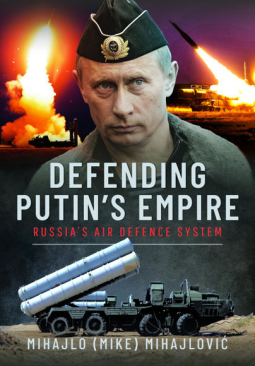
Defending Putin's Empire
Russia’s Air Defence System
by Mihajlo 'Mike' S. Mihajlović
This title was previously available on NetGalley and is now archived.
Send NetGalley books directly to your Kindle or Kindle app
1
To read on a Kindle or Kindle app, please add kindle@netgalley.com as an approved email address to receive files in your Amazon account. Click here for step-by-step instructions.
2
Also find your Kindle email address within your Amazon account, and enter it here.
Pub Date 30 Sep 2023 | Archive Date 14 Sep 2023
Pen & Sword | Frontline Books
Talking about this book? Use #DefendingPutinsEmpire #NetGalley. More hashtag tips!
Description
During the Cold War, the Soviet Union invested heavily in its air defence systems. As a result, Russia now possesses the most advanced air and ballistic missile defence systems in the world. Russian air defence systems are also highly proliferated and are currently in use by many countries.
Since the end of the Cold War and the breakup of the USSR, it has become increasingly possible to study Russian air defence, but Russia is by no means an open book on defence-related subjects. Some information circulates in the media, but for the time being, air defence systems are still subject to a degree of speculation.
Air and ballistic missile defence programs in the Soviet Union and Russia have a very long history. Soviet engineers started working on both programs in the 1950s, and by 1960 they had built the first successful systems able to intercept enemy aircraft and intermediate-range ballistic missiles.
Current Russian air defence doctrine follows a layered multi-level approach providing in depth coverage from any aerial or ballistic missile attack. This layered system allows Russian air defence forces to create zones that can be very difficult to penetrate. The highest level of these defensive networks uses long-range systems providing air defence umbrellas potentially up to 500+ km.
The second level includes medium-range systems like the S-350 and Buk variants (infamous for downing Malaysian Airline’s flight MH17 over the Ukraine in 2014). This medium-range level is intended to provide air defence zones which are also covered under the long-range systems but are more cost-effective in this envelope. The third level presents mobile short-range systems which are intended to provide extra protection for the long-range systems as well as stationary objects. These systems, along with highly mobile systems like the Buk are often also attached to ground forces formations such as armoured and mechanized divisions and brigades.
What are the abilities of these systems against NATO? President Putin emphasized the need to strengthen the country’s air defences amid NATO’s military activities near Russia’s borders. One of the key new concept developments is counter-stealth detection and interception. The other is to counter future hypersonic missile threats. It is, as the author reveals, Russia that is leading the way in these races.
Available Editions
| EDITION | Hardcover |
| ISBN | 9781399043076 |
| PRICE | |



